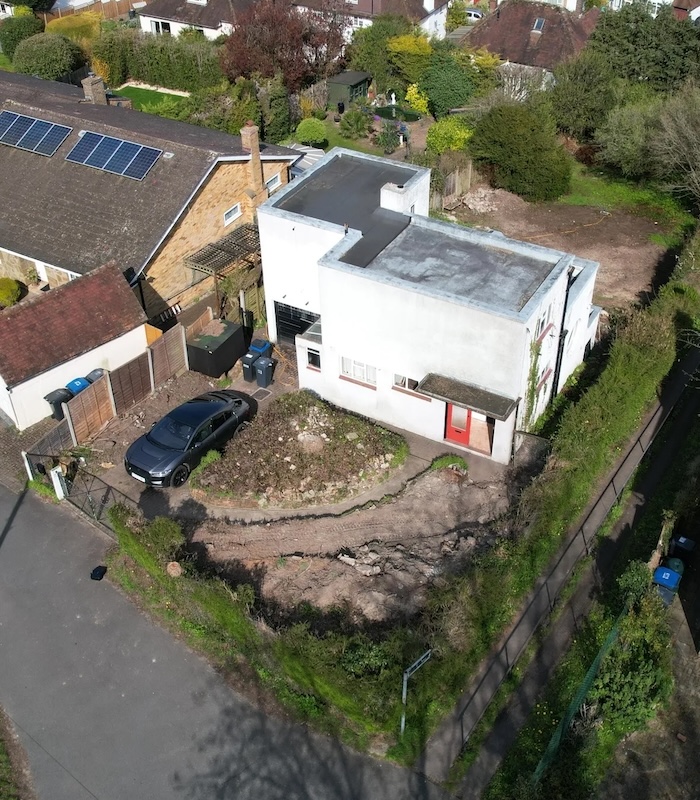So much for “war on the NIMBYs”

Last week Chris Philp, the Tory MP for Croydon South, a wealthy district on the southern edge of London where suburban streets rise up into the North Downs, posted a blog entry and an accompanying Tweet about the new Tory council’s refusal to allow a small block of flats to be built on the space of what he calls a “family home” on Riddlesdown Road, one of the aforementioned downside suburban streets. He calls the proposed building ‘ugly’ and says of the decision that it is “a welcome further example of the new approach to planning being taken by the Conservative-run planning committee – by contrast to the previous Labour-run committee which used to wave every application through”. In a similar blog post from this past January, he welcomed the refusal to allow a number of garages in another street in his constituency to be converted into semi-detached houses. In every such post, his rhetoric is the same: of course new houses (or flats) are needed, but let’s build them where they “fit in” and not in nice green suburbs like ours. Flats, he says, should be built in “Croydon town centre, central London and brownfield sites – not green suburbs like ours”. Not in his back yard, in other words.
In 2011, when the Tories were first returned to power in coalition, the rhetoric was of “war on the NIMBYs” and getting new houses built over objections from incumbents who were upset that their views might be changed or that they might just not like their new neighbours, though they often discovered an interest in whatever rare species might be impacted. It seems Croydon’s planning policy is to favour incumbents over the need for new homes. It’s likely that the developers will appeal to the planning ombudsman and win, because this development is not ugly or huge — it’s a four-storey building, not a stereotypical tower block, and as it is on a hill, only one storey will be visible from the road — and the building intended to be demolished is nothing but a run-down white box with a flat roof, very rare in the UK including that area, and an upper storey with no street-facing windows — in fact, the new building would be much more in keeping with local architecture than the current building. The new building is intended to meet Passivhaus standards according to its architects, meaning it would be highly energy-efficient. Looking at other houses in the surrounding streets, they do seem to be mostly detached houses with a few semis, mostly Mock Tudor with a few more modern examples, possibly built in place of houses damaged by bombing during World War II; there is no distinct architectural ‘character’ to the area. The only thing he can mean is that the new flats will change the human make-up of the area; that different types of people will live in them than live in the detached houses that make up most of the area, possibly people who are less likely to vote for him.

I also dispute his claim that the place for flats isn’t in a nice neighbourhood like his. All kinds of people are needed in a neighbourhood; the people who care for the elderly residents of some of these houses, the people who work in the shops, the teachers in local schools all have to live somewhere and none of them earn the kind of money that would buy you a four-bedroom house in Riddlesdown nowadays. Should they be expected to live in Croydon’s increasingly run-down town centre, or more than ten miles away in central London, to save wealthy homeowners what they might consider an eyesore? He talks about preserving “family homes for families” as if no family lives in a flat, and suggests that the flats be built on “brownfield sites”, as if that meant old factories which used to provide jobs, rather than any used plot of land, like this one. And as for the views, about the views people might enjoy from their flat windows: do “the sort of people who live in flats” have a right to no better view than roads, railways and concrete buildings? Maybe that floats some people’s boats but some might want to enjoy beautiful downland scenery, the same as or better than from the windows of some of the detached houses, and maybe they would like the cleaner air that comes with living closer to the countryside rather than breathing in the car fumes of Wellesley Road.
79 Riddlesdown Road is only one building; it is not intended to be social housing and will not solve the housing crisis or the climate crisis. However, it’s an interesting and innovative design and does actually fit in fairly well with the local architecture. Of course, most local responses are against; doubtless most people don’t want a big building project on their street and trucks coming up and down the road every day for the next couple of years. Philp’s ridiculous objection to this scheme is no more than pandering to NIMBYism, maybe in the hope of shoring up his wealthy voter base in the run-up to the general election. It’s a case of opposing change for the sake of it.


